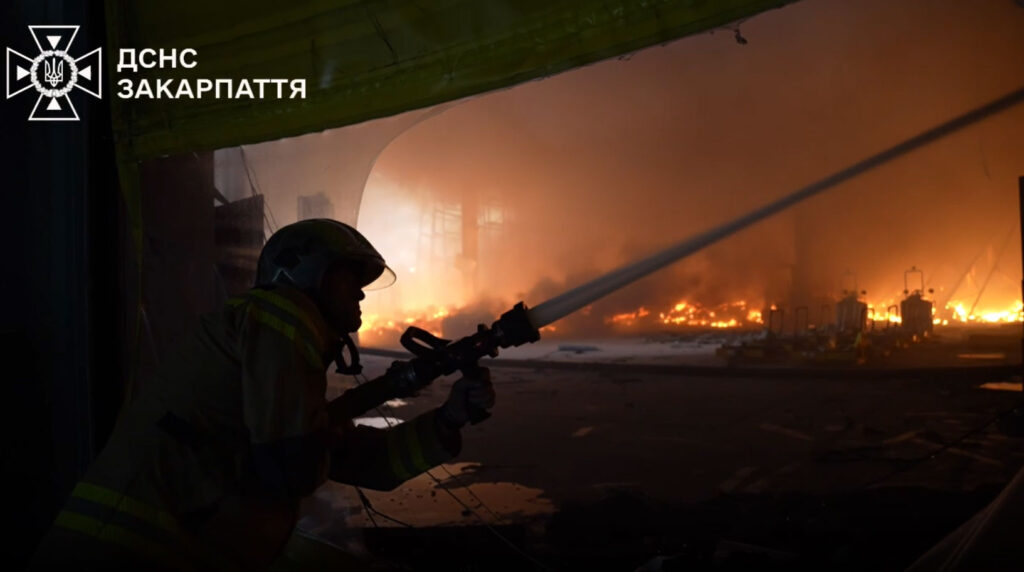Two days of fire in Mukachevo, 21 wounded — ISW says Russia hit US-owned Flex plant to scare off US and EU investors

A massive fire is still burning at the US-owned Flex plant in Mukachevo in Ukraine’s Zakarpattia Oblast after Russia’s 21 August missile strike, with 21 people confirmed injured, Ukraine’s Emergency Service reported. The Institute for the Study of War (ISW) says Moscow hit the factory to discourage foreign investment and had prepared the assault for weeks before the Alaska summit between Vladimir Putin and US President Donald Trump.
Among the targets of the 12 August attack was Mukachevo in Zakarpattia Oblast, where a missile hit the US-owned electronics manufacturer Flex. The strike caused a massive fire and injured employees. President Volodymyr Zelenskyy stressed that Flex was a civilian enterprise producing household goods such as coffee machines.
ISW: Strike aimed at discouraging foreign investment
ISW reported on 21 August that Russia likely struck the Flex plant “to discourage the United States and Ukraine’s European allies from investing in Ukraine or opening businesses within Ukraine.” The think tank emphasized that the targeting of a US-owned enterprise in Ukraine’s far west, near the borders with Hungary, Slovakia, and Poland, sent a clear signal.
Prepared in advance of the Alaska summit
ISW assessed that Russia had prepared for this assault for several weeks. In the lead-up to the 15 August Alaska summit between Putin and Trump, Russian forces launched smaller strike packages, which ISW said were designed to portray Moscow as a good-faith negotiator while conserving munitions.
The think tank noted that Russia had not launched Kalibr cruise missiles since 21 July or Kinzhal missiles since 4 August, suggesting these were deliberately withheld to be used in greater numbers during the 20–21 August strike.
Firefighting efforts continue in Mukachevo
By the morning of 22 August, Ukraine’s Emergency Service reported that the fire in Mukachevo had not yet been extinguished. More than 50 firefighters, 15 units of equipment, and two railway fire trains remain deployed to contain the blaze.
Read also
-
Massive Russian air attack hits Ukraine with 574 drones and 40 missiles, including city near Hungarian border
-
Reuters: After Alaska talks, Russia offers US firm return to Russian oil project and demands sanctions relief
-
Putin escapes US sanctions despite leaving Alaska talks without peace deal on Ukraine